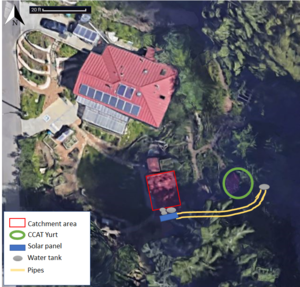
The goal of the operation and maintenance plan for this system in 2019 is to ensure the system fulfills its role in CCAT. The plan is based off the concept of CCAT as a learning laboratory for appropriate technology, meaning that every project must be (a) appropriate, (b) educational, and (c) adaptive. In our conception of appropriate, we require the system to fulfill the appropriate technology (AT) field-specific meaning and align with CCAT's mission of helping users to 'live lightly on the land.,' But more, it must be appropriate for the specific circumstances of CCAT, in which it must be flexible so future students can adjust or use the system;, it must be educational for CCAT visitors, and it must fulfill its purpose in CCAT. In terms of operations and maintenance (O&M), these mandates mean that the O&M plan must be straightforward, relatively low maintenance, accessible, and carried through multiple CCAT generations.
An overview of the plan is that the system is interacted with in summer, otherwise, the operation of the system is passive - it can catch, pump, and store water by itself. The maintenance plan has weekly, monthly, and yearly components. The most important part of the maintenance plan is the annual cleaning, which should involve all Co-Directors as it is the main mechanism for the transfer of knowledge across CCAT generations. One of the most critical parts of the plan is information accessibility, so there will be user-friendly documents on-site (see 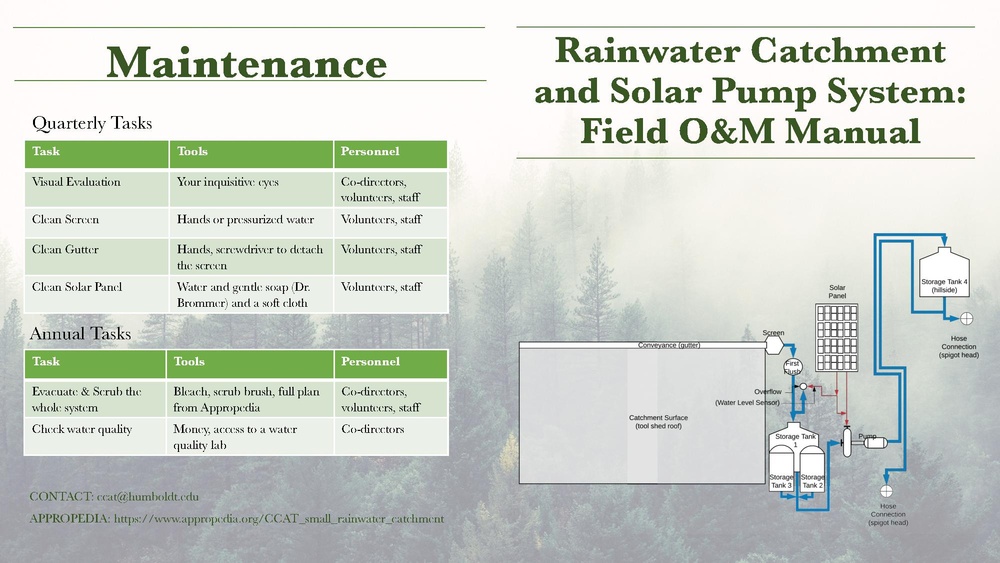 and online (see
and online (see 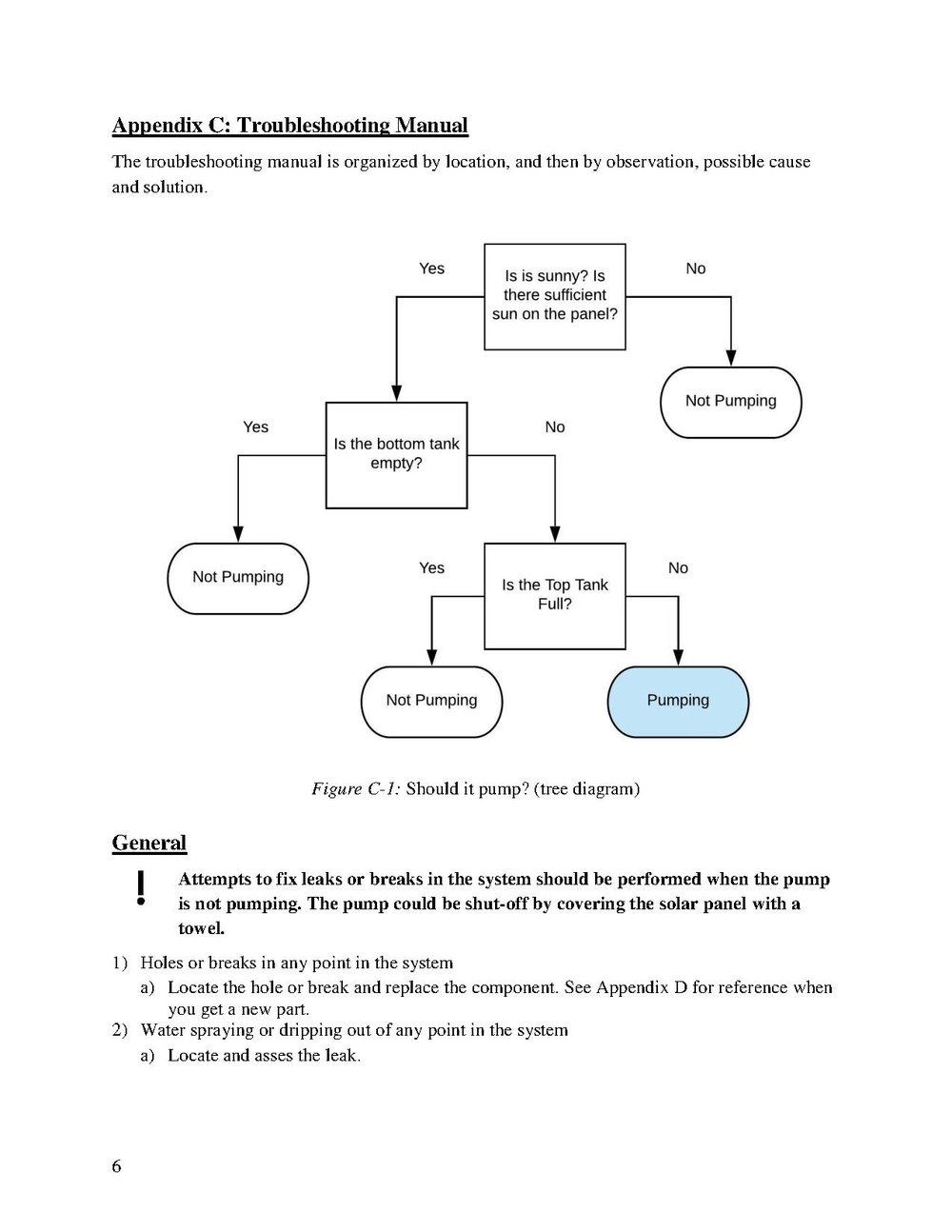 ).
).
System Operations[edit | edit source]
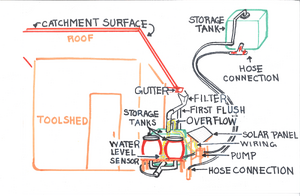
The system is used by CCAT in the dry months, and in the wet months, it can operate passively. More information on the system operation can be found on
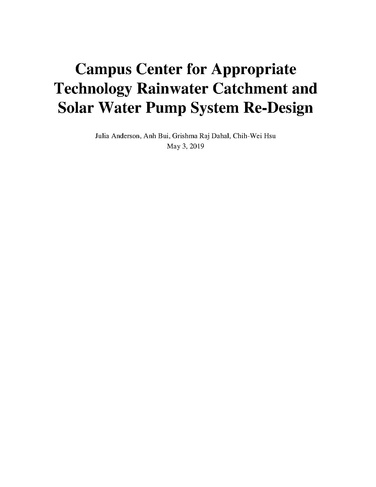
It is easiest to understand the system as if it consists of two separate parts: the wet side and the electric side. Essentially, the system catches, pumps, and stores rainwater to be used later (see Figure 2). Rain is caught on the roof, falls into the gutter, flows through the filter then over/into the first flush, and into the bottom storage tank system. The solar panel provides power to the pump, which pushes water up the hill to the upper tank when it is sunny. Opening the valve by the base of the solar panel allows water to flow out of the upper storage tank. The water from the upper tank gets delivered to the delivery hose which is near the pickle barrels in the bottom.
On the wet side of the system, water enters the system via the catchment area which is the tool shed roof. After getting collected in the roof the rainwater passes through the gutter which is also called the conveyance. The roof and conveyance are angled/tilted so that the water is conveyed with just the force of gravity. After passing through the conveyance the rainwater passes through the screen where the large debris, leaves and other particles are filtered out. Following that, the first few minutes of rainfall or the first few gallons of the rainfall enter the first flush. This is the dirtiest part of the rainfall which is not suitable for irrigation purposes. Once the first flush is full, water can pass over the top of the first flush and enter the three storage tanks which are next to the toolshed. The three storage tanks consist of one 264 gallon IBC tank and two 100 gallon pickle barrel tanks. The overflow pipe above the IBC tank helps drain water if the volume of rainfall is beyond the tank capacity. The water which is stored in the group of tans gets drawn by the solar water surface pump. The pump is powered by a solar panel located above it. The pump delivers the water to a 264 gallon tank which is situated up the hill. There are two points at which users can access the water. One of the outlets is attached to the hillside tank with a T connection. The other point is located near the base of the solar panel, where a hose can be screwed onto the pipe. Both spigots are connected to the upper tank. To use this water, users can connect a hose to the spigot head near the base of the solar panel or on the hillside, then open the appropriate valve. Water should flow.
On the electrical side of the system, the solar panel powers the pump, but can be turned off by a water level sensor if there is not much water in the lower tanks. On a sunny day, the panel is in direct sunlight for less than 5 hours, usually from about 11 or 12 AM to 3 or 4 PM. During these hours, the 18 V panel can provide enough power for the 24 V pump to pump water up the hill to another 264 gallon tank(approximately 26 feet higher in elevation than the bottom tanks). The pump is a self-priming diaphragm pump, meaning that it increases its internal volume to pull water in from the inlet, then closes that valve and decreases its internal volume, pushing water out the exit (imagine a heart). The electrical side of the system is wired so that the pump can be disconnected from the panel via a water-level sensor located inside the IBC tank below the overflow pipe.
Operation[edit | edit source]
System operation is mostly automatic. If you want to get water from the system, attach a hose at the connection point near the base of the panel. To water the food forest with the drip irrigation system, see the RCSP drip irrigation page[1]. If you run into issues, see the Troubleshooting Manual at  .
.
There are two main ways to use the water in the system. You can water the food forest through the drip irrigation lines by turning the lever controlling the valve connected to the black hose (see RCSP drip irrigation page]). Or you can get water by attaching a hose to the other outlet, then turning the lever for that valve. If water does not come out, check the water level in the top tank. If there is water in the top tank, but water is not coming out, check the troubleshooting manual. If there is no water in the top tank, you will not be able to get water at either of these connection points. {{Step